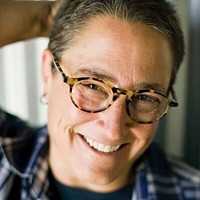Wednesday, September 26, 2018
Dig It
The remains were reburied at This Is The Place State Heritage Park across from Hogle Zoo.
Posted By Babs De Lay on September 26, 2018, 4:00 AM
It's not often you see an archeological dig going on in the capital city. I remember in 1986 there was a hubbub downtown when construction workers unearthed human bones along 200 West between 300 and 400 South. Oops, that was the original pioneer burial site for the first white settlers in the valley. The remains were reburied at This Is The Place State Heritage Park across from Hogle Zoo. However, the pioneer graveyard was on top of a Fremont Indian burial ground where workers found the bodies of three Native Americans and two pit houses.
Head just north of the zoo and you'll find the Fort Douglas Cemetery above the University of Utah campus near the entrance to Red Butte Gardens. Fort Douglas was originally a military supply center for the cavalry during the 1870s known as Camp Douglas. As more people began moving west after the Civil War, and as more battles between Native Americans and whites increased, so did the traffic at the camp. It was renamed Fort Douglas in 1878. During a construction project a few years ago, a backhoe uneartherd the original foundations of Camp Douglas' barracks and commissary.
Jump to the present and the University of Utah has hired two private archaeological consultants to conduct specific excavations under Potter Street (just across from the Fort Douglas Museum). The cool part is that anyone can visit the site from 8:30 a.m. to 4:30 p.m., Monday through Friday until Saturday, Sept. 29. This is your only chance to watch the excavating process. While there, visit the free museum (it's also an old enlisted men's barracks) that is fully wheelchair accessible and within a block of a UTA stop. The museum houses military artifacts, dusty dioramas and story boards and a special World War I exhibit commemorating the conflict's centennial. Outside, there are helicopters, tanks and artillery displays, a piece of the slurry wall from the Twin Towers and the Utah Women's Service Memorial.
If you want to learn about the Fort Douglas Cemetery, there's a tour open to the public at 1 p.m. on Saturday, Oct. 27. It's one of Utah's most historic cemeteries. A governor and Civil-War-era soldiers who died in the Battle of Bear River (later renamed the Bear River Massacre) are buried there. There's a section of WWI and WWII graves of prisoners of war from Germany (replete with swastikas), Italy and Japan and the burial place of the guy who killed Lakota Chief Crazy Horse.
More by Babs De Lay
-
Americans who think about fleeing to Canada would still have a hard time finding housing.
Urban Living
- Apr 17, 2024
-
A new skyscraper on State Street is one part office tower and one part Latter-day Saint meetinghouse.
Urban Living
- Apr 10, 2024
-
Spring in Salt Lake City means potholes to avoid and construction at Temple Square, Sugar House, the Avenues and more.
Urban Living
- Apr 3, 2024
- More »





